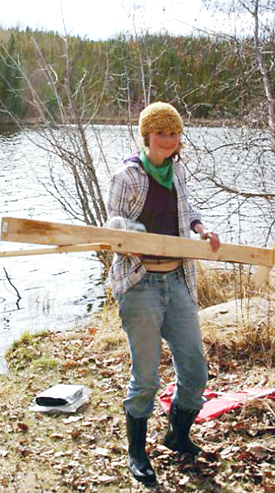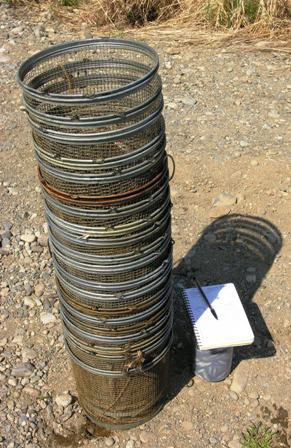On Trapping Lakes and Flagging Tapes
First day! Lauren taught me how to set traps in about two minutes while standing on the muskeg at Watson Lake. Muskeg is great stuff; generally, one can refer to it as bogland or marsh. It consists of sphagnum moss and other vegetation in various states of decomposition and is home to all sorts of interesting plants — like berry bushes (cranberry, blueberry, cloudberry, crowberry), carnivorous pitcher plants, wild calla lilies, and Labrador tea plants. Can one tell that we have been trying hard to identify every new plant and animal we stumble across out here?

Trapping the threespine stickleback sometimes requires the skills of a ninja warrior. In general, it is as easy as putting together a small minnow trap, throwing it out into the water, and tying it off to vegetation at the water’s edge. We usually throw about ten traps in a lake and leave them overnight before coming back the next day to count and preserve the fish we’ve caught. Where we trap at a lake is a matter that becomes more delicate. Some lakes do not have public accesses, or the public access is so well-traveled that we wouldn’t want to throw traps there because curious Alaskans and/or tourists might pull them up to check them out. Or worse, think we’re doing something wrong and remove our traps completely! Our ninja skills include finding isolated spots to throw traps, hiding our flagging tape and ropes from inquiring eyes, and making friends with nice homeowners who might let us throw traps off their property.
To throw a stickleback trap: tag them (with permit number, Lauren’s name and contact info, and a line indicating that the trap is for research purposes), flag them (with the same information), toss them out parallel to shore, tie the rope off to nearby vegetation and discreetly hide the flagging tape. Our waterproof notebook (rightly labeled “Collector’s Bible 2008 Part 1”) gets a sketch indicating where each trap is, air and water temperature, GPS coordinates, and directions to the lake if we don’t currently have them. All of this information, as well as the counts we get for fish collected the next day, later gets copied neatly into a notebook for future referencing available to anyone using the collections from 2008.
The water quality girls had their first run today. They managed to set up their canoe with necessary equipment, but unfortunately have forgotten the chlorophyll filter in the lab in Massachusetts! Lauren and Jana have attempted to “MacGyver” a replacement filter, but the sponge that was supposed to be the filter got damp and the sealant hasn’t properly sealed. No worries. John will send the real piece of equipment a.s.a.p. to the Kenai National Wildlife Refuge for us to pick up on Tuesday.
– Rachel
